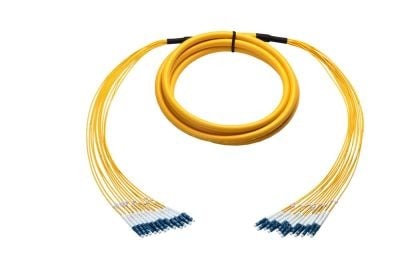In today’s fast-paced digital world, the demand for fast, reliable data transmission is higher than ever. Multi fiber cables are transforming how networks are designed and managed, offering speed, efficiency, and scalability. This article explores the types, applications, and benefits of multi fiber cables, highlighting why they are essential for businesses seeking effective networking solutions.
What Are Multi Fiber Cables?
Multi fiber cables bundle multiple optical fibers into a single cable, enabling high-speed data transmission. Designed for bandwidth-intensive applications, they are ideal for data centers, telecommunications, and enterprise networks. By consolidating fibers, these cables improve performance while simplifying cable management and organization.
Types of Multi Fiber Cables
Understanding the different types of multi fiber cables helps organizations make smart networking investments:
-
OM3 Fiber: Supports 10 Gigabit Ethernet over distances up to 300 meters.
-
OM4 Fiber: Extends 10 Gbps connections up to 400 meters, suitable for longer links.
-
OM5 Fiber: Designed for high-capacity, long-distance applications, meeting exceptional bandwidth demands.
Selecting the right fiber depends on your network’s bandwidth requirements and distance considerations.
Applications of Multi Fiber Cables
Multi fiber cables are versatile, supporting a wide range of sectors:
-
Data Centers: Connect switches, routers, and servers for fast data transfer and management.
-
Telecommunications: Enable ISPs to provide reliable high-speed connectivity.
-
Enterprise Networks: Support robust networks capable of handling increasing data traffic while allowing future scalability.
These applications highlight the crucial role multi fiber cables play in modern networking.
Key Advantages of Multi Fiber Cables
-
High Capacity: Transmit multiple signals simultaneously, improving overall data efficiency.
-
Space-Saving Design: Multiple fibers in a single cable reduce clutter and enhance organization.
-
Durability: Protective features, such as armored casing, ensure longevity in high-traffic areas.
-
Future-Proofing: Enable networks to adapt to growing data demands, supporting long-term infrastructure needs.
Spotlight on a Leading Product: MPO-MPO OM3 8 Fiber Armored Cable
The MPO-MPO OM3 8 Fiber Armored Cable stands out for durability and high performance. Designed for heavy-duty applications, it features MPO connectors that simplify installations and improve efficiency in high-density networking environments. Ideal for data centers and large enterprise networks, it ensures robust connectivity even under demanding conditions.
Making Informed Networking Investments
Choosing the right multi fiber cable impacts network performance, efficiency, and operational success. Organizations should assess:
-
Current and future bandwidth needs
-
Compatibility with existing infrastructure
-
Applications the cabling will support
Proper evaluation ensures long-term network reliability and scalability.
Conclusion: Embrace the Future of Networking with Multi Fiber Cables
Multi fiber cables are a critical investment for optimizing network performance. Their high capacity, space-saving design, and durability make them indispensable for modern networking challenges. By understanding the types, applications, and advantages, businesses can make strategic decisions that support innovation, efficiency, and future growth.
Embracing multi fiber solutions equips organizations to thrive in an increasingly data-driven world.









